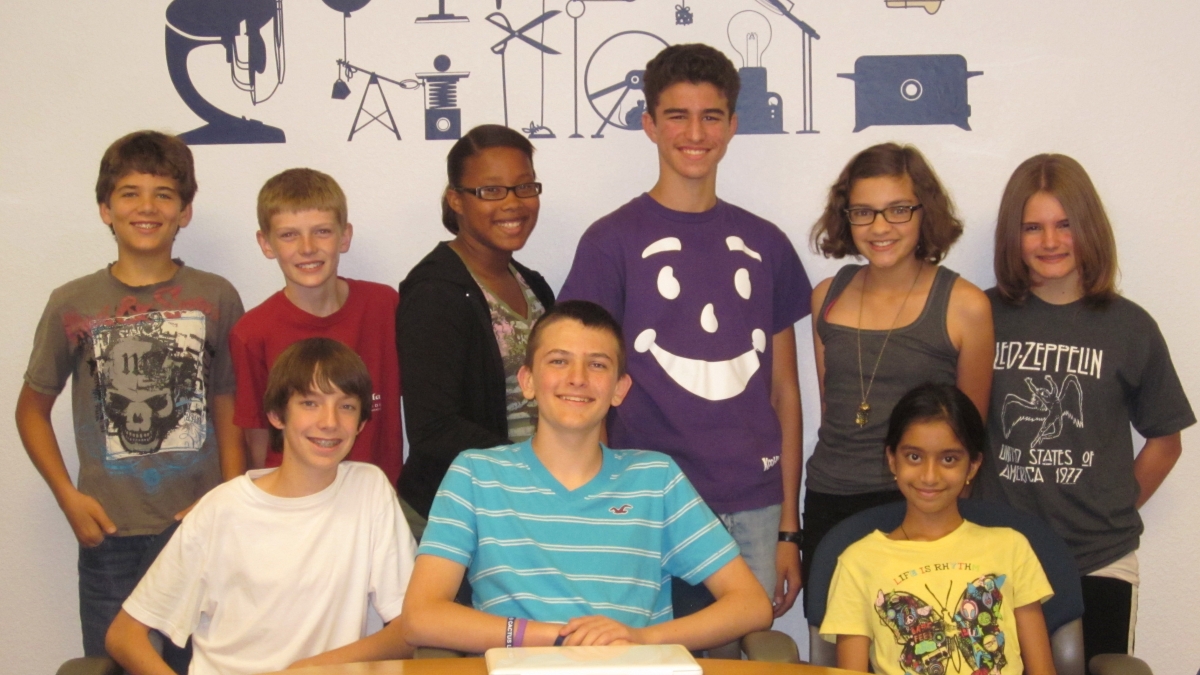Herberger Young Scholars reach across pond, tackle global issues

As if it weren’t enough to be among the inaugural class at Arizona’s first university-based school designed specifically for gifted students, a group of middle-school students at the Gary K. Herberger Young Scholars Academy has begun work on a collaborative research project in partnership with students from the RSA Academy in Tipton, England.
The Herberger Young Scholars Academy at Arizona State University welcomed its first group of 29 gifted students in August. Ten of those students were selected to participate in the Global Perspectives Project.
The Academy was founded through The Herberger Strategic Investment Fund, which was established by a $20-million gift from university benefactors Gary K. and Jeanne L. Herberger. The fund, part of the University’s Strategic Investment Program, is administered by the President’s Office and provides resources on a competitive basis to individual ASU units to launch, initiate and secure substantial additional funding for programs of strategic importance to the university.
The Global Perspectives Project teams the Herberger Academy students with their peers at RSA to investigate and reflect on key global issues from a personal, local/national and global perspective. The students will use web-based communication tools to facilitate their long-distance collaboration.
“Young people globally face unprecedented challenges in an interconnected and information-heavy world, including how they will gain a sense of their own active place in the world and cope with changes that will affect their life chances and life choices,” said Kimberly Lansdowne, executive director of the Herberger Academy, which is an initiative of ASU’s Mary Lou Fulton Teachers College. “Through the Global Perspectives Project, students at both institutions will gain research experience, rich contextualized content, and interaction with international counterparts that will serve them well as they grow intellectually and socially.”
Students will conduct individual research as well as group projects on topics of interest to them. There is no shortage of potential topics, or enthusiasm, among the Herberger students.
“I am very interested in women’s rights,” said 13-year-old Scottsdale resident Kiana Clarke. “Statistics show there is a gender preference in first-world countries as well as third-world countries. My participation will give me a chance to explore this topic in more detail.”
Added Quinn Klocke, “I am particularly interested in business and trade, and different countries’ trade policies.” Klocke is a 12-year-old from Phoenix.
“I love looking at issues like health care around the world and the economy,” said Sam Shapiro, 13, from Scottsdale.
“I am really intrigued by animal behavior,” said Alayzha Turner-Rodgers, 13, from Glendale. “I am gaining experience researching issues on a global level, being able to explore topics around the world.”
For both the individual and group projects, students are required to prepare research reports which may utilize multimedia elements. Group reports must show evidence that students have collaborated across countries and cultures. They also will deliver a public presentation of their findings.
“In addition to working with each other, students will have opportunities to work with instructors from both academies, as well as faculty from ASU and Warwick University to gain international perspective on collaboration, advanced academic research, and social action,” said Kimberly Elms, the Herberger Academy’s curriculum and technology director.
Participating in the Global Perspectives Project also is designed to prepare students to take the Cambridge International General Secondary Education examination.
Students’ work on the project comes on top of their studies in the Herberger Academy’s rigorous, fast-paced curriculum. During the next three years they will complete work for grades seven through 12 that students normally complete in six years. The following two years will be spent taking coursework in ASU’s New College of Interdisciplinary Arts and Sciences, augmented through Barrett, the Honors College. Depending on the rate at which they progress through their high-school studies, some of the students will start taking New College and Barrett classes on an even more accelerated schedule.
The students’ descriptions of their experiences after two months at the Herberger Academy center on how it differs from schools they have previously attended.
“This program is so interactive and fast-paced that there’s no such thing as boredom here,” Shapiro said. “Everyone is friends, there’s no bullies, no drama. It’s just school with friends, but it doesn’t feel like school.”
“I am able to learn at my own pace, surrounded by students who want to succeed just as much as I do,” said Turner-Rodgers. “I find myself having a new adventure every day with what I am learning,” added Clarke.

